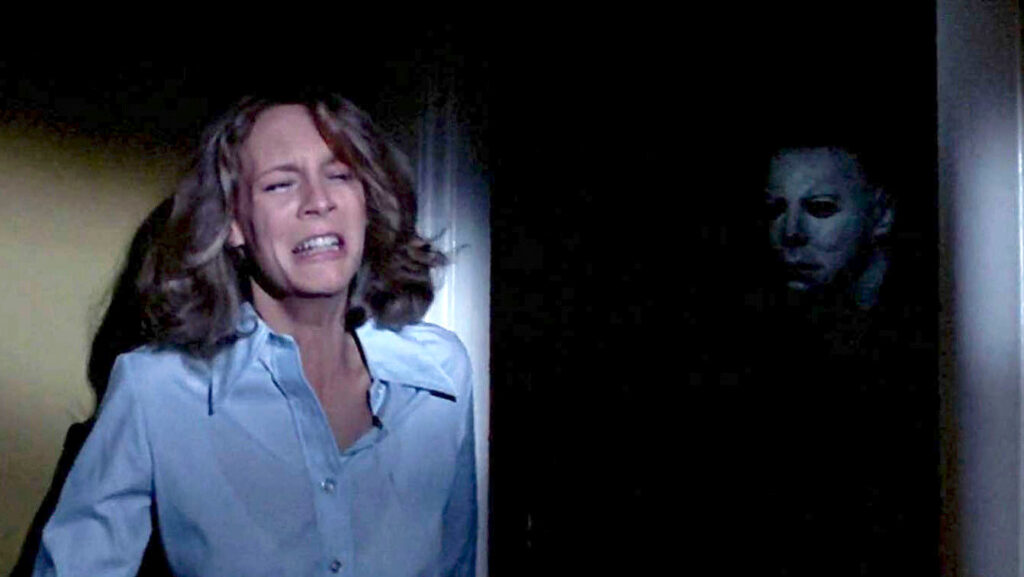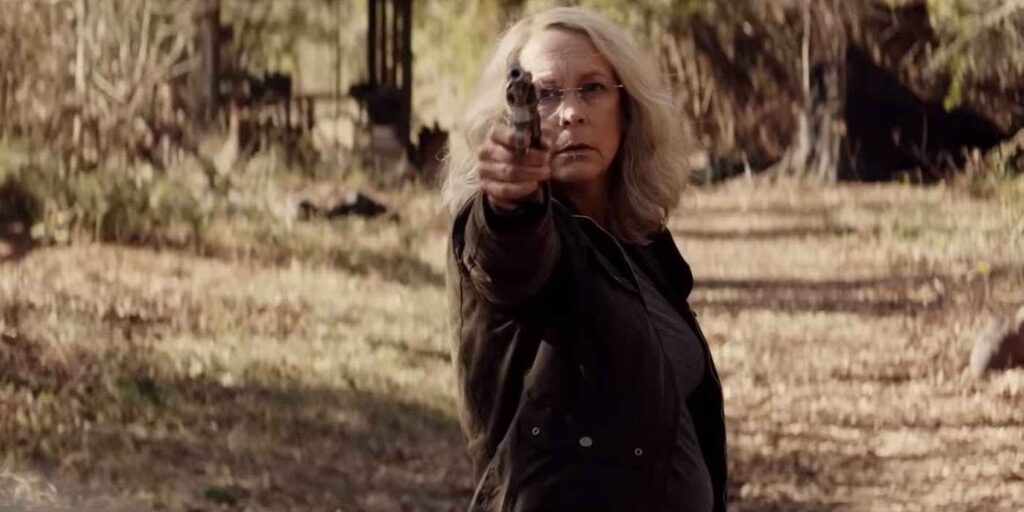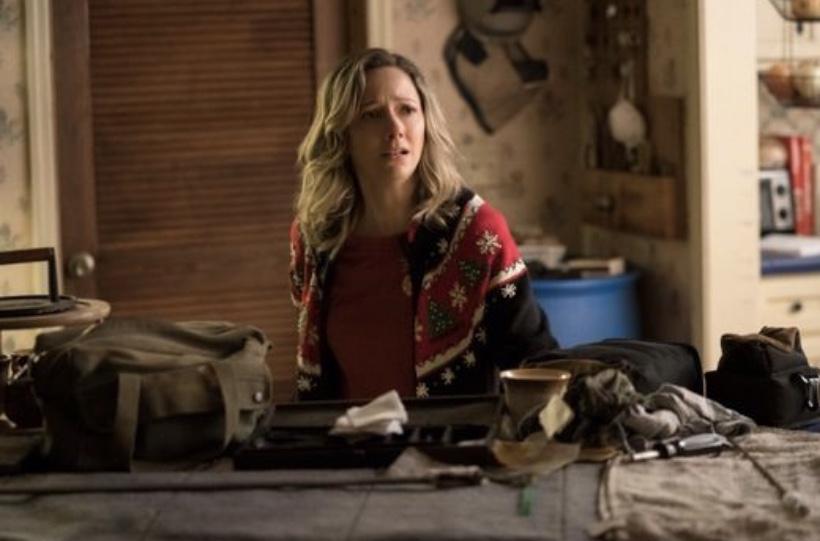Matriarchy Rising: Laurie Strode Guides a New Generation of Final Girls

Matriarchy: a social system in which the primary positions of power and leadership are held by women.
The horror genre is, without a doubt, a matriarchy. Yes, there are male villains, famous and fun, but many of our most beloved genre protagonists are female. As society is more accepting of women expressing emotion, female characters, villainous and virtuous, are the primary modes of empathy in examining the horrors that terrify us. Though not always recognized, it is the women of horror who shape these stories. We are the victims. We are the heroes. And often we are the final survivors, living on to carry the weight of trauma and warnings for others.
By demanding to be seen and heard, these women lead us forward in our ever-evolving quest to discover who we are as individuals; we are not defined by our gender or a system of stereotypical standards placed on us at birth. They help us examine who the world tells us to be and give us the courage to be more. This column is dedicated to the female and femme characters of horror who lead the way.
Laurie Strode, All Grown Up
Laurie Strode is the undisputed queen of the final girls. She leads an elite group of phenomenal women who have fought off masked killers for decades. Just 17 when she was brutally attacked by Michael Myers on Halloween night of 1978, she epitomizes the character trope of a lone survivor battling a relentless murderer. Though not the first final girl, Laurie’s seminal story has helped define one of the most iconic subgenres in horror history: the slasher.

Played by Jaime Lee Curtis, Laurie has appeared in the original Halloween and three additional sequels, Halloween II, Halloween H20: 20 Years Later, and Halloween Resurrection. But it is in David Gordon Green’s Halloween (2018) that she builds her matriarchy. Eschewing all films but the original, this franchise entry picks up with our favorite final girl 40 years later on the eve of Michael’s (James Jude Courtney, Nick Castle) transfer to another institution. Rewriting canon, this version of Michael is a stranger who happens to see her stop by his childhood home as he hides inside it. Fixating on Laurie, he stalks her throughout the day lurking outside her bedroom and watching her from behind bushes. He is a menacing monster who sets his sights on a pretty girl and tries to destroy her, not a brother bent on revenge.
Related: Grief and Terror with THE FINAL GIRLS and PHANTASM
By reframing his relationship to Laurie, Michael becomes a symbol of the patriarchy itself. An ever-present faceless shape watching women from the shadows and killing them to maintain a social order that perpetuates their fear. Michael is seemingly unstoppable, surviving several stab wounds from Laurie and six gunshots from Dr. Loomis, who appears in the film’s final moments to save her. Michael disappears into the night. We hear his breathing over images of Haddonfield, indicating that though we believe him to be dead, he is an ever-present monster potentially lurking anywhere. His blank male face could be anyone and we, as women, are not safe. It’s an important distinction in Laurie’s story as well. By recasting her relationship with Michael, she becomes an avatar for all women. In fighting for her own life, she fights for ours as well.
By including Laurie’s daughter Karen (Judy Greer) and granddaughter Allyson (Andi Matichak), Halloween (2018) presents a powerful depiction of matriarchy. Laurie has spent the last 40 years of her life preparing for Michael’s return. She lives as a survivalist, essentially barricaded in a home outfitted with floodlights, hidden safe rooms, a shooting range for target practice, and many, many locks. For decades, she’s prepared for the inevitable day when Michael will return to finish the job. She believes that as long as he lives, he represents a threat to her. In this way she becomes an important weapon in our fight against a system designed to destroy us. Laurie’s experiences will help us prepare us for the moment when the Michaels of the world come for us.
Also Read: ‘Halloween Kills’: Laurie Strode Is Ready to Face Michael Myers in Final Trailer

Laurie’s daughter Karen grew up in her mother’s compound. Though she never met Michael, her childhood was spent hearing stories of her mother’s boogeyman. Taken from her home at age 12 by social services, Karen is now a therapist. She spent her teen and adult years trying to understand the trauma her mother experienced and the ways that she’s become a secondary victim. Laurie’s own mental state and the paranoia she unintentionally projected on her daughter has inspired Karen to become a protector of women as well by learning to help them process the same type of pain her mother has been unable to overcome.
When Michael does find his way to Laurie’s house, both women are prepared. Laurie hands out weapons, noting the functions each will play in taking him down. Though Karen now rejects her mother’s worldview, she leans on the strength of her childhood lessons to defend herself and her daughter. Retreating to the basement stronghold, Karen finds her old shotgun emblazoned with her initials and a lightning bolt, signaling the art of a strong girl believing herself capable and confident.
Related: First Reactions to ‘Halloween Kills’ Out of Venice International Film Festival Are Split
When Michael breaks through the barricade, Karen prepares to shoot him. Frightened, she calls for her mom to help her, doubting her ability to put her years of training into action. But as Michael moves into her sights, her helpless demeanor breaks to reveal an icy calm. “Gotcha,” she says as she pulls the trigger and catches him in the neck. Karen knows how to defend herself at that moment because her mother told her what he would be drawn to, a helpless and frightened woman. She knows how to patiently lure him in because Laurie trained her for this very moment. The quality of Laurie’s parenting is perhaps a conversation for another day. But the truth remains that without her mother’s training and preparation, Karen would likely become Michael’s latest victim.

Laurie’s granddaughter Allyson also receives the benefits of Laurie’s experiences. She has grown up hearing about her grandmother’s boogeyman as well and is fully aware of Michael Myers. In his murderous rampage of 2018, he crosses paths with Allyson’s friends and murders them just like he murdered Laurie’s friends 40 years ago. Allyson sees Michael on the street next to her friend’s dying body and immediately knows he’s a threat. Like her grandmother, she runs down a deserted street desperately seeking help only to find locked doors and unconcerned neighbors. Laurie was forced to defend herself from Michael’s attack alone in an unfamiliar house, but Allyson knows where she will find protection. After escaping Michael a second time, she runs through the woods to her grandmother’s house.
Related: The Spirit of Michael Myers is “Unkillable” in John Carpenter’s New Track From the ‘Halloween Kills’ Score
The film’s final shot is of Allyson holding the bloody knife she used to stab Michael. She clings to it while huddling with Karen and Allyson in the back of the truck she flagged down to take them to safety. This is a direct reversal of the classic “drop the knife” trope common in slasher theory. Final girls have long been criticized for picking up the killer’s weapon and landing a single blow, then dropping it again in fear and horror at what they’ve done.
Carol Clover, author of Men, Women, and Chainsaws: Gender in the Modern Horror Film, equates this knife to a phallus. She posits that when the final girl holds it, she is gendering herself male. By dropping it, she reverts to her female persona of victimhood. It’s also a point of frustration for viewers who beg for characters to deliver a definitive killing blow before assuming themselves safe.
Laurie herself drops several weapons while attacking Michael in 1978. It’s a natural response to a situation most of us can only imagine; this is not written as an indictment of her actions. However, after seeing Michael repeatedly rise from apparent death to resume his attack, she has learned to take nothing for granted and passed that lesson on to her granddaughter. So Allyson holds onto the knife. She may believe the threat has passed, but learning from Laurie’s experiences, she clutches her weapon and keeps up her guard.
Related: Fear of the Shape: A HALLOWEEN Franchise Retrospective
Laurie has spent most of her life building a trap for Michael. Knowing she can’t reach him in the asylum, she’s waited and prayed for the day when he would escape so she can kill him once and for all. As their climactic battle concludes, three generations of Strode women stand above Michael in a position of power as he finds himself trapped in the now burning basement. Laurie’s years of preparation and training have paid off. Though Karen and Allyson have valid points that she should put the past behind her, Laurie’s greatest fear has indeed come true. Michael has returned. Because Laurie shared her experiences and maintained her watch, she has taught her daughters to survive alongside her.
But the Strode women are not the only ones Laurie has saved. Millions of women have found strength in watching Laurie fight for her right to live. If Michael represents the patriarchy, then defeating him once and for all will take years of consistent work. We too must maintain our watch. He lives on to torment us in one shape after another. So we must share our stories of strength and prepare future generations to fight with us.
Related: DEVELOPMENT HELL Now Unearths the Unproduced HALLOWEEN 3D

By returning to face down her monster 40 years later, Laurie also shows that there is more to survival than simply remaining alive until the sun rises. In Halloween (2018) and the fantastic Halloween H20: 20 Years Later, she shows us that trauma leaves lasting scars that take time to heal. Laurie struggles with her trauma the way millions of women have struggled with their own. Watching her continue to find strength in the midst of enormous pain lets us know we’re not alone.
As the Strode women huddle together in the film’s final scene, they comfort Laurie as well as each other. She has shown tremendous strength and by sharing her experiences, has guided them in saving their own lives. But she is human and in need of comfort. Perhaps the biggest lesson of Halloween (2018) is that if we are ever to defeat the monsters that plague women, we must learn to share our experiences and stand together.
Categorized:Editorials

